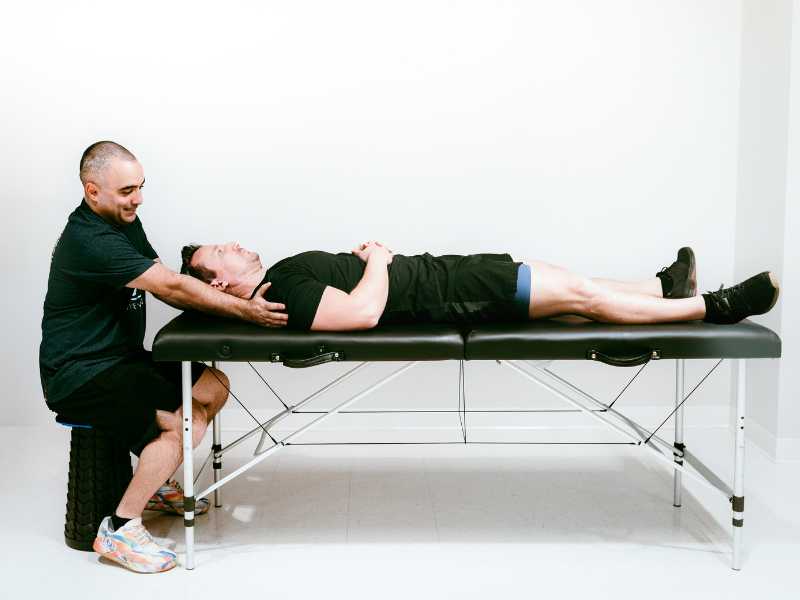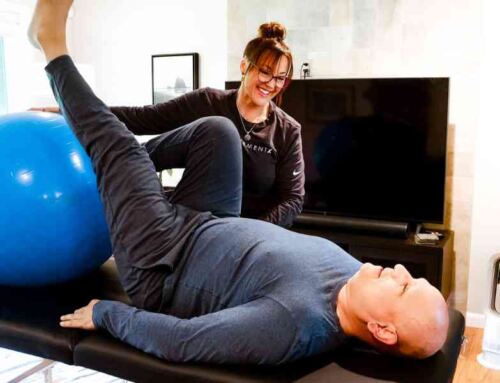Let’s talk about PIP, or Personal Injury Protection – an important part of your car insurance that kicks in when you’ve been injured in an accident. If you’re dealing with something like whiplash, shoulder pain, low back pain, sciatica, a concussion, or any other condition affecting your health after a crash, PIP provides a pot of funds that can go toward your medical payments immediately – including physical therapy.
What is PIP?
When you purchase car insurance, PIP is a type of coverage that helps you pay for medical expenses and other related costs resulting from a car accident. It’s designed to help you get the care you need without delays or out-of-pocket costs.
Why Is PIP So Helpful?
PIP can be incredibly convenient. It helps offload the cost of healthcare after a traumatic event like a car crash. You don’t have to wait for insurance companies to figure out who’s at fault. You can get started with physical therapy or other necessary care right away. But it can also be nuanced — and that’s why it’s important to understand all aspects of leveraging your PIP and work closely with your physical therapist and insurance claim adjuster.
How to Use PIP for Physical Therapy
Once you’re in an accident, the first thing you should do is file a claim immediately so you can unlock access to your PIP funds. Then, make sure your healthcare providers – like your physical therapist – know:
- Your claim number
- Your insurance adjuster’s name and contact info
- That your care is being filed under your auto accident claim, not your private health insurance
This step ensures that billing goes through your PIP coverage and not your standard insurance.
Keep close track of your PIP funding…
Adjusters usually won’t tell your healthcare providers how much Personal Injury Protection (PIP) funding is available on your claim. This is intended to protect you and prevent any one provider from overusing your benefits. However, it also means your providers typically have no way of knowing how much money remains in your case unless you’re keeping track of it yourself.
After a car accident, it’s common to seek a variety of treatments like physical therapy, chiropractic care, acupuncture, or massage. These can all be helpful, but it’s easy for costs to add up quickly. Depending on your state and your specific insurance policy, your PIP coverage might range anywhere from a few thousand dollars to $50,000.
That’s why it’s important for you, as the patient, to stay in regular contact with your claims adjuster. Make it a habit to check in and confirm how much PIP funding is left as your treatment continues. Doing so helps you avoid unexpected out-of-pocket expenses later on.
What happens if I exhaust my PIP funding?
If you use up all of your Personal Injury Protection (PIP) coverage and continue receiving care, you may become responsible for paying out of pocket. That’s why it’s so important to keep track of how much of your PIP has been used and how much is still available.
If you believe you’ll need ongoing medical treatment or additional support to cover the full impact of the accident, you might consider hiring a personal injury attorney. An attorney can help you pursue a settlement from the insurance company that accounts for the full extent of your injuries and expenses.
If you’re looking for a recommendation, we’re happy to connect you with one of our trusted personal injury attorneys.

PIP Covers More Than Just Medical Bills
PIP doesn’t only cover medical care – it can also cover:
- Lost wages
- Essential services (like help around the house if you can’t manage daily tasks)
- Transportation costs to and from medical appointments (in some states)
Be sure to check what your specific policy includes and what’s allowed in your state.
PIP Requirements Vary by State
PIP coverage varies by state and by plan. In some states, it’s required. In others, it’s optional.
- In Oregon, PIP is mandatory, and every driver is required to have a minimum of $15,000 in coverage for reasonable and necessary medical expenses, available for up to 2 years after the accident.
- In New York, also a no-fault state, PIP coverage is required at a minimum of $50,000.
- In South Carolina and Georgia, PIP is not required. These are at-fault states, meaning you can purchase an optional MedPay rider, but it’s not included by default.
Fault vs. No-Fault States: Why It Matters
Depending on the state you live in, the laws differ around PIP and who pays for your care.
- In no-fault states like Oregon and New York, your own car insurance company pays for your medical services – even if the accident was someone else’s fault. This allows for quick access to care like physical therapy without delays.
- In at-fault states like Tennessee, the at-fault driver’s insurance is responsible for covering your medical bills. This can delay your care, as your insurance company may need to battle the other company for reimbursement – which takes time and creates a lot of back and forth.
Bottom line: PIP is a critical benefit after a car accident, especially when you’re in pain and need fast access to physical therapy. But it’s up to you to make sure your claim is active, your providers have the right info, and your funds are being used wisely. Understanding how PIP works, and tracking it closely, can make a huge difference in your recovery journey.







